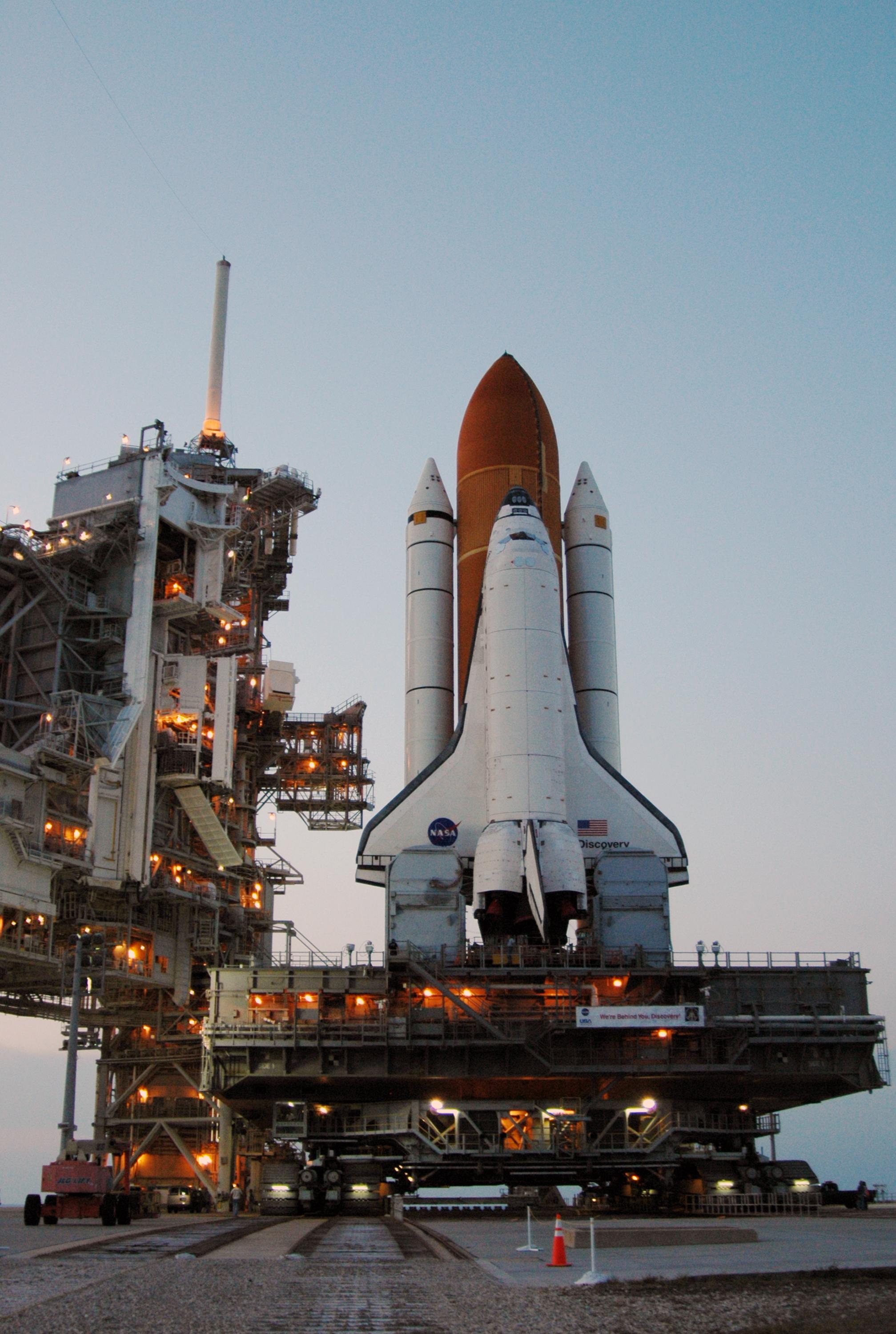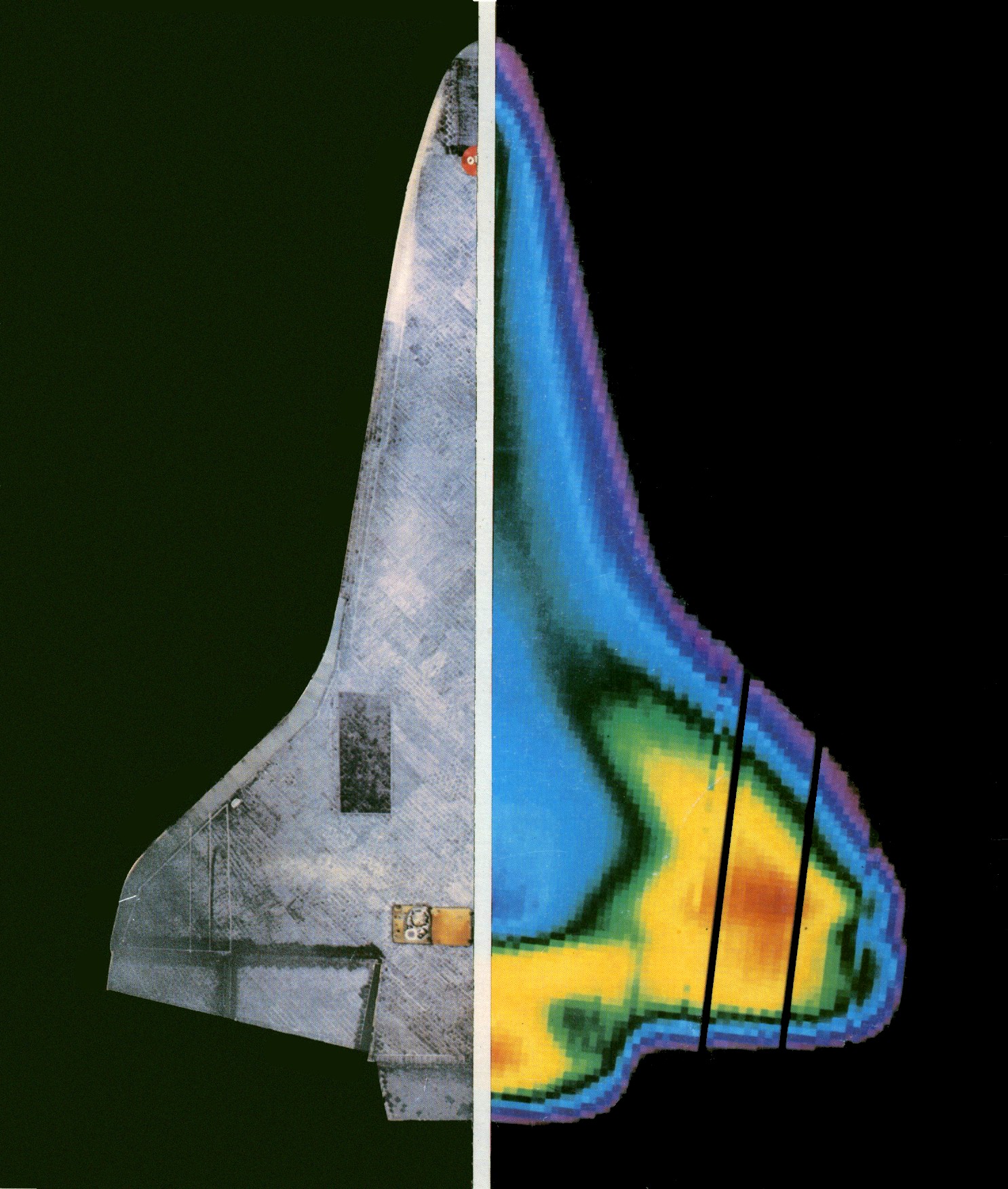|
STS 121
STS-121 was a 2006 NASA Space Shuttle mission to the International Space Station (ISS) flown by . The main purposes of the mission were to test new safety and repair techniques introduced following the ''Columbia'' disaster of February 2003 as well as to deliver supplies, equipment and German European Space Agency (ESA) astronaut Thomas Reiter to the ISS."STS-121 Nasa Press Kit" NASA Press Kit – STS-121, May 2006. After two weather-related delays, the shuttle successfully launched on Tuesday, 4 July 2006 at 14:37:55 EDT. It was the first and only shuttle launch on the United States' . The mis ... [...More Info...] [...Related Items...] OR: [Wikipedia] [Google] [Baidu] |
Space Transportation System
The Space Transportation System (STS), also known internally to NASA as the Integrated Program Plan (IPP), was a proposed system of reusable crewed space vehicles envisioned in 1969 to support extended operations beyond the Apollo program. (NASA appropriated the name for its Space Shuttle Program, the only component of the proposal to survive Congressional funding approval). The purpose of the system was two-fold: to reduce the cost of spaceflight by replacing the current method of launching capsules on expendable rockets with reusable spacecraft; and to support ambitious follow-on programs including permanent orbiting space stations around Earth and the Moon, and a human landing mission to Mars. In February 1969, President Richard Nixon appointed a Space Task Group headed by Vice President Spiro Agnew to recommend human space projects beyond Apollo. The group responded in September with the outline of the STS, and three different program levels of effort culminating with a ... [...More Info...] [...Related Items...] OR: [Wikipedia] [Google] [Baidu] |
STS-115
STS-115 was a Space Shuttle mission to the International Space Station (ISS) flown by . It was the first assembly mission to the ISS after the ''Columbia'' disaster, following the two successful ''Return to Flight'' missions, STS-114 and STS-121. STS-115 launched from LC-39B at the Kennedy Space Center on 9 September 2006 at 11:14:55 EDT (15:14:55 UTC). The mission is also referred to as ISS-12A by the ISS program. The mission delivered the second port-side truss segment (ITS P3/P4), a pair of solar arrays (2A and 4A), and batteries. A total of three spacewalks were performed, during which the crew connected the systems on the installed trusses, prepared them for deployment, and did other maintenance work on the station. STS-115 was originally scheduled to launch in April 2003. The ''Columbia'' accident in February 2003 pushed the date back to 27 August 2006, which was again moved back for various reasons, including a threat from Tropical Storm Ernesto and the strongest l ... [...More Info...] [...Related Items...] OR: [Wikipedia] [Google] [Baidu] |
List Of Human Spaceflights To The International Space Station
A ''list'' is any set of items in a row. List or lists may also refer to: People * List (surname) Organizations * List College, an undergraduate division of the Jewish Theological Seminary of America * SC Germania List, German rugby union club Other uses * Angle of list, the leaning to either port or starboard of a ship * List (information), an ordered collection of pieces of information ** List (abstract data type), a method to organize data in computer science * List on Sylt, previously called List, the northernmost village in Germany, on the island of Sylt * ''List'', an alternative term for ''roll'' in flight dynamics * To ''list'' a building, etc., in the UK it means to designate it a listed building that may not be altered without permission * Lists (jousting), the barriers used to designate the tournament area where medieval knights jousted * ''The Book of Lists'', an American series of books with unusual lists See also * The List (other) * Listing (di ... [...More Info...] [...Related Items...] OR: [Wikipedia] [Google] [Baidu] |
STS-118
STS-118 was a Space Shuttle mission to the International Space Station (ISS) flown by the orbiter '' Endeavour''. STS-118 lifted off on 8 August 2007 from launch pad 39A at Kennedy Space Center (KSC), Florida and landed at the Shuttle Landing Facility at KSC on 21 August 2007. This was the first flight of ''Endeavour'' since STS-113 in November 2002, which was also the last successful shuttle flight before STS-107 which culminated in the loss of '' Columbia'' when it disintegrated during reentry. STS-118 pilot Charles Hobaugh had been the entry team CAPCOM for STS-107. ''Columbia'' had originally been selected for this flight, for what would have been its 29th mission, and its first and likely only visit to the ISS, mainly due to its heavier weight. The mission is also referred to as ISS-13A.1 by the ISS program. The mission added two more components to the ISS and brought supplies for its crew. During and after the mission, the media focused heavily on a small puncture in the ... [...More Info...] [...Related Items...] OR: [Wikipedia] [Google] [Baidu] |
Space Shuttle Thermal Protection System
The Space Shuttle thermal protection system (TPS) is the barrier that protected the Space Shuttle Orbiter during the searing heat of atmospheric reentry. A secondary goal was to protect from the heat and cold of space while in orbit. Materials The TPS covered essentially the entire orbiter surface, and consisted of seven different materials in varying locations based on amount of required heat protection: * Reinforced carbon–carbon (RCC), used in the nose cap, the chin area between the nose cap and nose landing gear doors, the arrowhead aft of the nose landing gear door, and the wing leading edges. Used where reentry temperature exceeded . * High-temperature reusable surface insulation (HRSI) tiles, used on the orbiter underside. Made of coated LI-900 silica ceramics. Used where reentry temperature was below 1,260 °C. * Fibrous refractory composite insulation (FRCI) tiles, used to provide improved strength, durability, resistance to coating cracking and weight reducti ... [...More Info...] [...Related Items...] OR: [Wikipedia] [Google] [Baidu] |
Space Shuttle Columbia
Space Shuttle ''Columbia'' (OV-102) was a Space Shuttle orbiter manufactured by Rockwell International and operated by NASA. Named after the Columbia Rediviva, first American ship to circumnavigate the upper North American Pacific coast and the Columbia (personification), female personification of the United States, ''Columbia'' was the first of five Space Shuttle orbiters to fly in space, debuting the Space Shuttle, Space Shuttle launch vehicle on STS-1, its maiden flight in April 1981. As only the second full-scale orbiter to be manufactured after the Approach and Landing Tests, Approach and Landing Test vehicle ''Space Shuttle Enterprise, Enterprise'', ''Columbia'' retained unique features indicative of its experimental design compared to later orbiters, such as test instrumentation and distinctive black Chine (aeronautics), chines. In addition to a heavier fuselage and the retention of an internal airlock throughout its lifetime, these made ''Columbia'' the heaviest of the fi ... [...More Info...] [...Related Items...] OR: [Wikipedia] [Google] [Baidu] |
Carlos Noriega
Carlos Ismael Noriega (born 8 October 1959) is a Peruvian-American NASA employee, a former NASA astronaut and a retired U.S. Marine Corps lieutenant colonel. Education * 1977: Graduated from Wilcox High School, Santa Clara, California * 1981: Bachelor of science degree in computer science from University of Southern California * 1990: Master of science degree in computer science from the Naval Postgraduate School * 1990: Master of science degree in space systems operations from the Naval Postgraduate School. Awards and honors *2 Defense Meritorious Service Medal *Air Medal with Combat Distinguishing Device * Air Medal (Strike Flight Award) *Navy Achievement Medal *2 NASA Space Flight Medal *NASA Exceptional Service Medal Military career Noriega was a member of the Naval ROTC unit at the University of Southern California and received his commission in the United States Marine Corps in 1981. Following graduation from flight school, he flew CH-46 Sea Knight helicopters with HMM ... [...More Info...] [...Related Items...] OR: [Wikipedia] [Google] [Baidu] |
Sergey Volkov (cosmonaut)
Sergey Aleksandrovich Volkov (russian: Сергей Александрович Волков; born April 1, 1973, in Chuhuiv, Ukrainian SSR, Soviet Union) is a retired Russian cosmonaut and engineer. He was a member of three missions to the International Space Station, spending more than a year in total in space. During his missions he did four spacewalks lasting more than 23 hours in total. Volkov retired from the Cosmonaut group in February 2017. Personal Volkov is the first second-generation cosmonaut (and space walker), the son of cosmonaut Aleksandr Volkov. He was born on April 1, 1973 in Chuguyev, Kharkov Region, Ukraine. Volkov and his wife Natalia have a son who was born in 2001. His recreational activities include tennis, windsurfing, reading, and visiting museums. Education Volkov graduated from Star City high school in 1990 and entered the Tambov Air Force Academy for Pilots. He graduated in 1995 with a degree of pilot/engineer. Awards Volkov was awarded the He ... [...More Info...] [...Related Items...] OR: [Wikipedia] [Google] [Baidu] |
Expedition 13
Expedition 13 was the 13th expedition to the International Space Station (ISS), and launched at 02:30 UTC on 30 March 2006. The expedition used the Soyuz TMA-8 spacecraft, which stayed at the station for the duration of the expedition for emergency evacuation. Astronaut Marcos Pontes launched with Expedition 13 on the Soyuz TMA-8 spacecraft and became the first Brazilian in space. He returned with Expedition 12 on Soyuz TMA-7 after a nine-day mission. Thomas Reiter, from the European Space Agency, became part of the Expedition 13 crew in July 2006. Reiter was launched with the second "Return to Flight" mission on ''Discovery'' (STS-121) on 4 July 2006. Reiter became the first European long-duration crew member on the International Space Station when he officially joined the crew of the ISS at 19:13 UTC on 6 July 2006 upon the complete installation of his Soyuz spacecraft seat liner, allowing him to return to Earth aboard the docked Soyuz craft. Reiter's arrival restored the s ... [...More Info...] [...Related Items...] OR: [Wikipedia] [Google] [Baidu] |
Columbia Accident Investigation Board
The ''Columbia'' Accident Investigation Board (CAIB) was an internal commission convened by NASA to investigate the destruction of the Space Shuttle ''Columbia'' during STS-107 upon atmospheric re-entry on February 1, 2003. The panel determined that the accident was caused by foam insulation breaking off from the external fuel tank, forming debris which damaged the orbiter's wing, and that the problem of "debris shedding" was well known but considered "acceptable" by management. The panel also recommended changes that should be made to increase the safety of future shuttle flights. The CAIB released its final report on August 26, 2003. Major findings The board found both the immediate physical cause of the accident and also what it called organizational causes. Immediate cause of the accident 82 seconds after launch a large piece of foam insulating material, the "left bipod foam ramp", broke free from the external tank and struck the leading edge of the shuttle's left wing ... [...More Info...] [...Related Items...] OR: [Wikipedia] [Google] [Baidu] |
Independence Day (United States)
Independence Day (colloquially the Fourth of July) is a federal holiday in the United States commemorating the Declaration of Independence, which was ratified by the Second Continental Congress on July 4, 1776, establishing the United States of America. The Founding Father delegates of the Second Continental Congress declared that the Thirteen Colonies were no longer subject (and subordinate) to the monarch of Britain, King George III, and were now united, free, and independent states. The Congress voted to approve independence by passing the Lee Resolution on July 2 and adopted the Declaration of Independence two days later, on July 4. Independence Day is commonly associated with fireworks, parades, barbecues, carnivals, fairs, picnics, concerts, baseball games, family reunions, political speeches, and ceremonies, in addition to various other public and private events celebrating the history, government, and traditions of the United States. Independence Day is the n ... [...More Info...] [...Related Items...] OR: [Wikipedia] [Google] [Baidu] |

.jpg)






